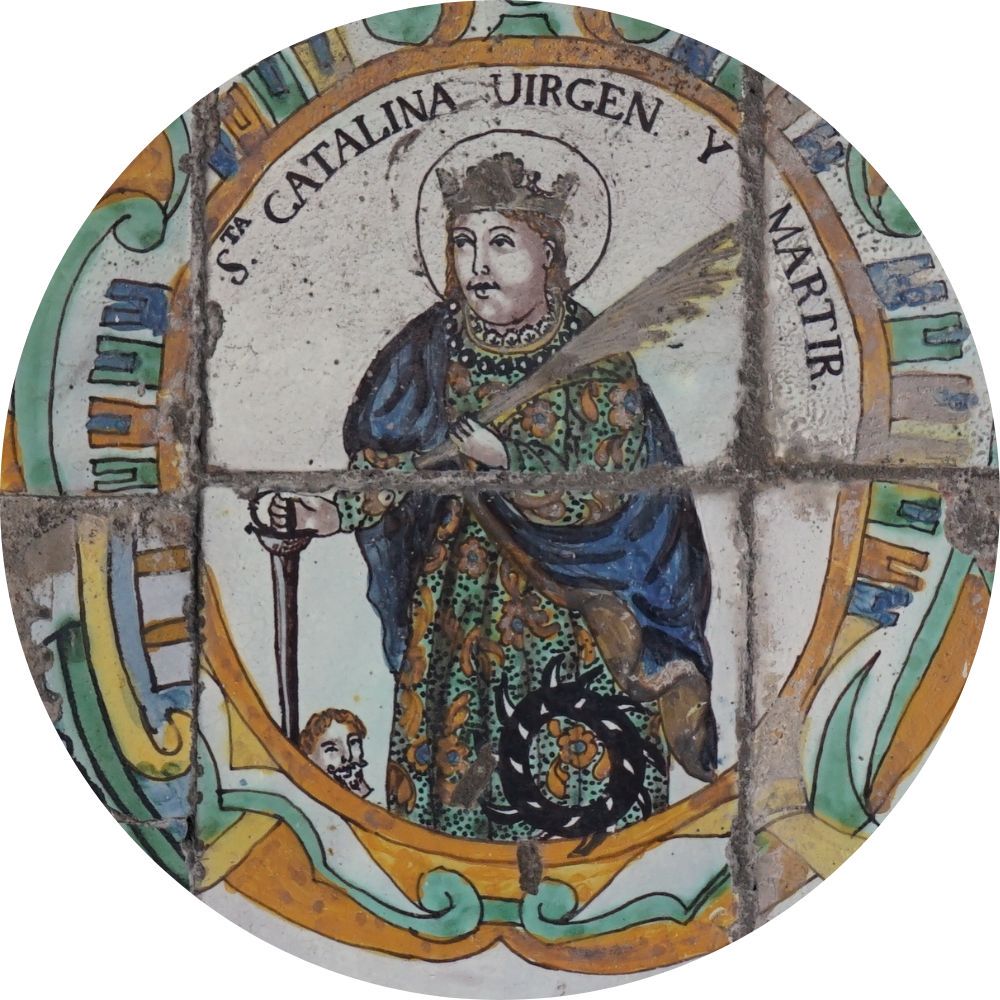St. Catherine of Alexandria
St. Catherine of Alexandria, virgin and martyr
(late third and early fourth century)
She was born at the end of the third century in Alexandria. She came from a wealthy family holding the highest offices. As a result of a revelation of Mary and the Child to her, she converted to Christianity and vowed chastity. When Emperor Maxentius began persecuting Christians, she openly condemned his action. The emperor then summoned 50 pagan sages to face Catherine in a disputation and refute her pro-Christian views. None of them succeeded, and some of the wise men - under the influence of Catherine - converted to Christianity, causing them to suffer martyrdom. Catherine was sentenced to death after the dispute. She was supposed t have her bones broken with a wheel, but an angel descending from heaven destroyed it. Then she was beheaded. She has been surrounded by veneration since her death.
The cult of the saint has developed in both the Western Church and the Orthodox Church. At the top of Mount Catherine in Sinai is the small chapel of Saint Catherine, where, according to tradition, the body of the 18-year-old saint Catherine was placed by angels on the highest peak. In the 10th century, it was moved by hermit monks to the bottom of the mountain and placed in a golden coffin in the erected monastery of St. Catherine. Since then, the peak has been named in her honor, and the place has become associated with her cult.
The attributes of St. Catherine of Alexandria include an angel, the Child Jesus, philosophers, a palm branch, a wheel on which she was broken, a crown in her hand, a cross, a book, a sword, and a thunderbolt. In iconography, she is depicted wearing a crown, with the palm of martyrdom in her hand and a bone-breaking wheel (sometimes still with a book and sword). She is also shown during mystical nuptials with Christ or in prison, in the presence of Christ. During the Gothic and Renaissance periods, she was often depicted together with saints Barbara, Dorothy and Margaret.
St. Catherine of Alexandria also found an important place in the Dominican tradition, which is probably why she was among the saints, blessed and famous figures of the Order of Preachers. She was even present at the creation of the Dominican Order. After Bl. Reginald of Orléans received the habit from Mary, which from there on was to be the monastic garb of the Dominicans (previously they had worn canonical clothing). Mary, accompanied by Saints Cecilia and Catherine of Alexandria, appeared to Dominic, anointed him with heavenly fragrance, moreover, showed him a long white scapular, which was also to become a part of the habit. The second Dominican legend featuring St. Catherine of Alexandria, tells of an event in 1530, when Br. Lawrence was said to have received from the Mother of God, St. Mary Magdalene and St. St. Catherine of Alexandria a painting depicting St. Dominic with a book and a lily. Thus, it is not without reason that a holy virgin and martyr from the third century found herself among the sisters and brothers of the Order of Preachers. She is even one of the patronesses of the order, and the first brothers even considered her their protector.
Bibliography:
- Morton J., The legend of St. Katherine of Alexandria, London 1841.
- Duval A., La dévotion mariale dans l'Ordre des Frères Prêcheurs, [in:] Maria. Etudes sur la sainte Vierge, ed. H. du Manoir, vol. 2, Paris, 1952, pp. 739–782.
- Wiseman D. V., Devotion to Mary among the Dominicans in the Thirteenth Century, „Marian Studies”, 52 (2001), pp. 246-263, esp. pp. 250-251.
- Dzielska M., Hypatia z Aleksandrii, Kraków 20103.
- Negruzzo S., Il culto di Santa Caterina d’Alessandria nelle università d’Occidente, [in:] Santi patroni e Università in Europa, cura di P. Castelli, R. Greci, Bologna 2013 (Centro interuniversitario per la storia delle università italiane. Studi, 21), pp. 33-54.

